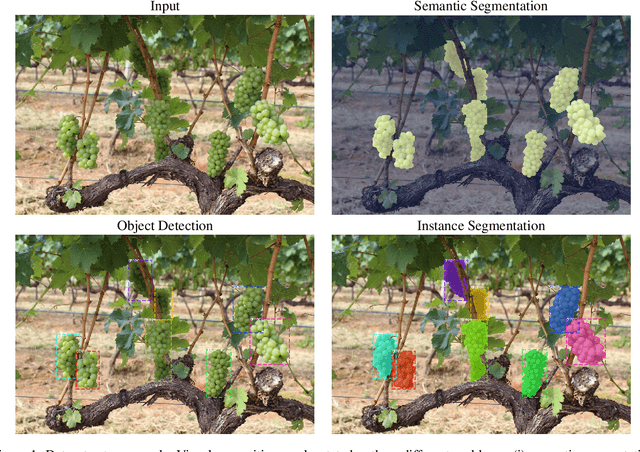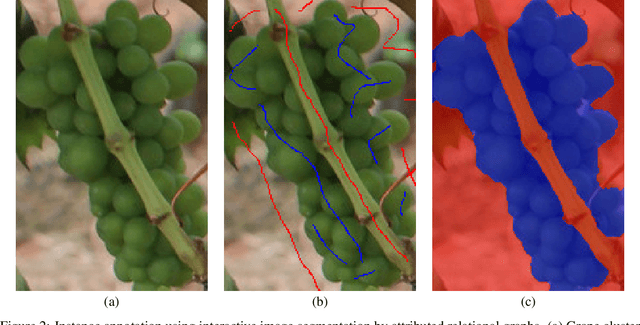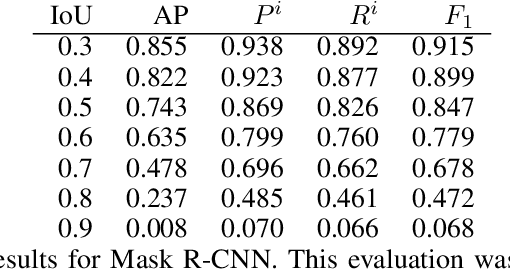Grape detection, segmentation and tracking using deep neural networks and three-dimensional association
Paper and Code
Aug 12, 2019



Agricultural applications as yield prediction, precision agriculture and automated harvesting need systems able to infer the culture state from low cost sensing devices. Proximal sensing using affordable cameras combined to computer vision have seen a promising alternative, strengthened after the advent of convolutional neural networks (CNNs) as an alternative for challenging pattern recognition problems in natural images. Considering fruit growing monitoring and automation, a fundamental problem is the detection, segmentation and counting of individual fruits in orchards. Here we show that for grape wines, a crop presenting large variability in shape, color, size and compactness, grape clusters can be successfully detected, segmented and tracked using state-of-the-art CNNs. In a dataset containing 408 grape clusters from images taken on field, we have reached a F1-score up to 0.91 for instance segmentation, a fine separation of each cluster from other structures in the image that allows a more accurate assessment of fruit size and shape. We have also shown as clusters can be identified and tracked along video sequences recording orchards rows. We also present a public dataset containing grape clusters properly annotated in 300 images and a novel annotation methodology for segmentation of complex objects in natural images. The presented pipeline for annotation, training, evaluation and tracking of agricultural patterns in images can be replicated for different crops and production systems. It can be employed on the development of sensing components for several agricultural and environmental applications.
 Add to Chrome
Add to Chrome Add to Firefox
Add to Firefox Add to Edge
Add to Edge